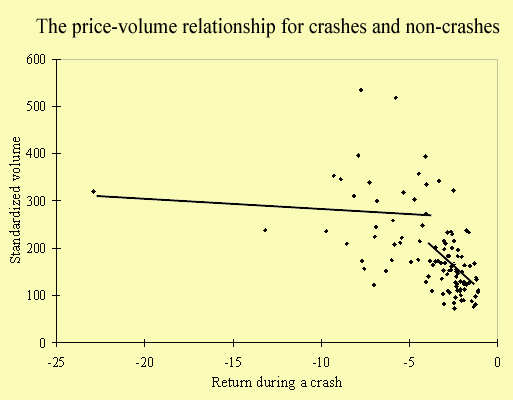

A Wall Street adage says that "It takes volume to change prices." Indeed, most of empirical studies find a positive correlation between absolute stock price changes and transaction volume. From a theoretical point of view, it can be argued that each transaction brings new information to the market; hence, the larger the volume is, the more opportunities there are for prices to change.
In this article we investigate the relationship between stock prices and transaction volume when price declines are "large". Namely, we look at minimal daily returns observed each year. Using a database for a portfolio of US stocks for the period 1885-1990, we select the lowest daily return observed each year. An observation of minimal returns is classified as a "crash" if it is higher than a given threshold (four standard deviations away from the mean in our study). On the basis of this criterion, 31 minimal returns are classified as "crashes" and 75 as "non-crashes". Transaction-volume data consist of the number of shares (normalized to take into account the trend in volume).
The main result of this research is the following stylized fact: when a minimal return is small (in absolute terms), its size shows a strong correlation with transaction volume. However, the price-volume relationship is very weak for minimal returns associated with "crashes": a given trading volume may translate into quite different price declines. Empirically, the correlation between minimal returns and transaction volume is -0.06 for crashes and -0.39 for non-crashes. The figure reproduced below illustrates this stylized fact. It gives the yearly minimal return and the trading volume on the same day with the regression lines.

Such a finding is consistent with the "misinterpreted trade" hypothesis of stock market crashes.
 Return to the publication list
Return to the publication list
The asymptotic distribution of extreme stock market returns
From VaR to stress testing : the extreme value approach